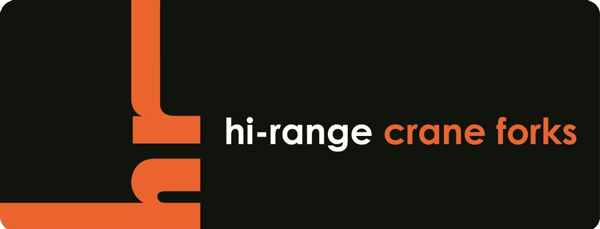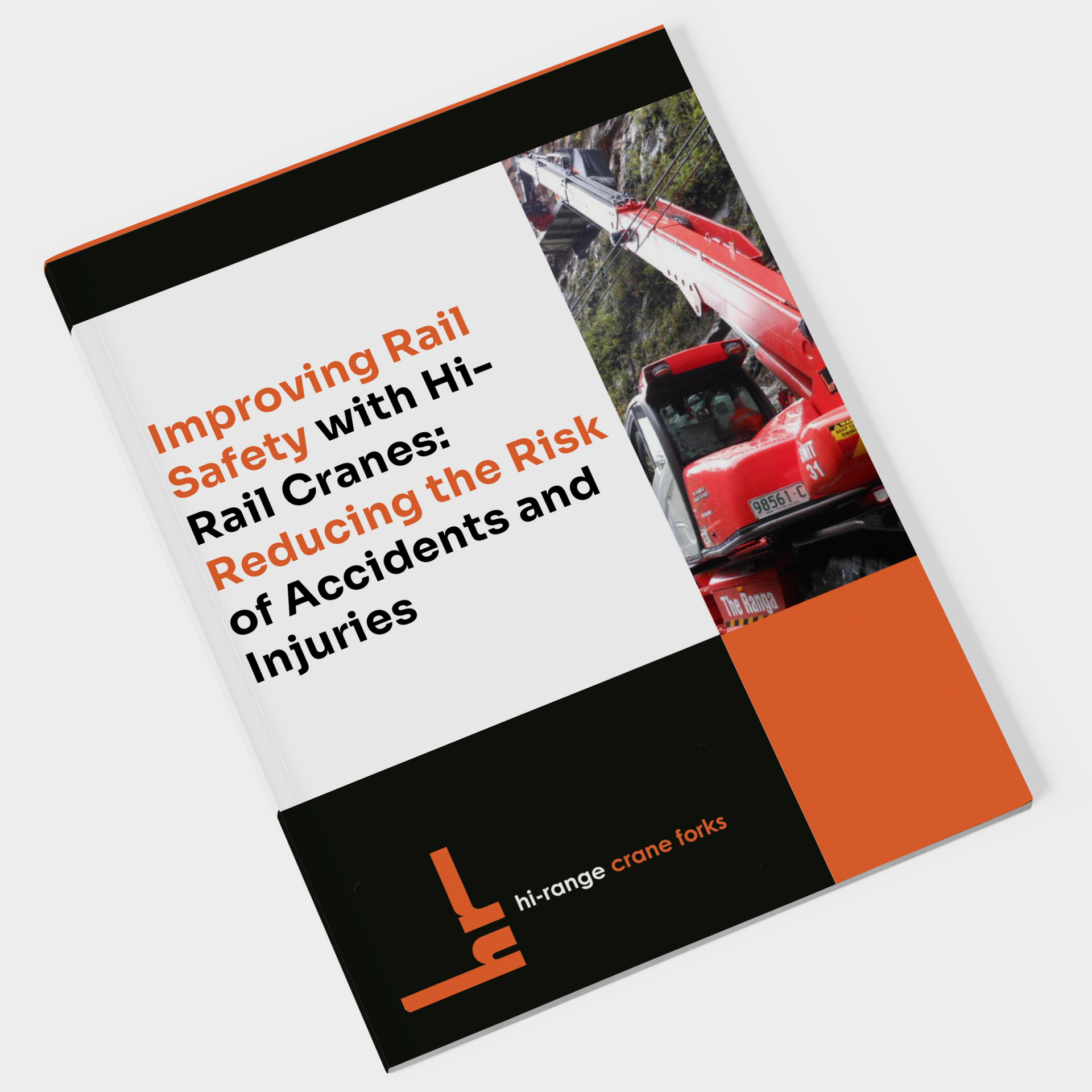16/02/2023
Introduction
The safety advantages of hi-rail cranes: An in-depth look at how hi-rail cranes can improve safety in the rail industry by reducing the risk of accidents and injuries during operations.
When utilising cranes to complete rail constructions, it is paramount to protect and maintain the safety of workers. In the case of mobile cranes, a SafeWork NSW data analysis in 2018 discovered that the most common safety incidents for this crane involved collapses. Mobile cranes, by nature, involve a range of operating and relocation safety considerations, and their movements throughout a worksite leave room for a range of risk factors.
Hi-rail cranes could offer safety advantages that mitigate a number of industry risks due to their high level of accessibility, minimising the need to traverse difficult landscapes and roadblocks.
Railway corridors can often be difficult to access, whether due to fencing, surrounding structures, power lines, or station layouts. In order to complete installations or repairs in tight-access areas, mobile cranes must be carefully manoeuvred. Yet despite best efforts and practices, there is always a higher level of risk involved with utilising mobile cranes for these projects.
Choosing Hi-Rail cranes for railway works offers a higher level of safety and access to a wide range of railway types and locations. Hi-rail cranes are specifically designed to operate on railways, with the added benefit of being fixed to the track when in use, which can dramatically reduce potential risk factors associated with mobile crane operation.
The main topics this document will cover include:
- The range of safety risks involved in operating mobile cranes for railway construction
- Issues with limited mobile crane access have when traversing railway locations and landscapes
- How Hi-Rail crane systems bypass the safety issues involved in mobile cranes and offer a fixed-track safety advantage
- Between 2011 and 2015, 45% of mobile crane accidents involved crane overturns, which was the largest cause of crane accidents between these years
The risks of using mobile cranes for railway constructions
There are many risks and issues involved with using a mobile crane for railway constructions.
Tipping risks while operating
One of the main risks associated with mobile cranes is the potential for tipping over. According to the North Carolina Department of Labor, one mobile crane tips over during every 10,000 hours of crane use in the US. Tipping often occurs when cranes are not correctly set up, when the load being lifted exceeds the crane's capacity, or when improper access is attempted.
This means that attempting to traverse difficult landscapes or areas like those found in railway constructions can result in a mobile crane tipping over, which can cause severe damage to equipment and surrounding structures, as well as injury or death to workers and members of the public.
Slow-paced, cautious access
Another risk associated with mobile cranes is the need for careful access. This can increase the risk of accidents and delays, as well as increase construction time. Mobile cranes are typically large and heavy, and they require a stable and level surface to operate on which can be a challenge in urban areas where the availability of suitable sites is limited.
Additionally, mobile cranes often require extensive set-up and take-down procedures, which can also add to the risk and time required for construction. Before these mobile cranes can be used for railway constructions, correct assembly is required to mitigate risks.
Not suitable for emergency scenarios
Mobile cranes are not suitable for emergency response constructions such as bridge collapses, natural disasters, and accidents. Their large size and weight can make it difficult to access the site of an emergency, and they may be limited by traffic, road access, and long assembly requirements. Mobile cranes are not typically equipped with the necessary features to operate in emergency conditions, such as the ability to lift heavy loads quickly or move through tight spaces.
Difficult traversing crowded areas
Mobile cranes often complete work beside the track corridor, rather than on it. If the area around a track is full of obstacles like buildings, workers, or other structures, then lifting may be required over these areas. However, lifting over these obstacles poses further safety risks. In their General Guide for Cranes, SafeWork Australia stated that “Loads should not be lifted over public access areas including footpaths, roads, highways, railways, waterways and buildings. If there is a risk of people being hit by falling objects, control measures… should be used to prevent people being hit by falling objects during lifting operations.”
The safer alternative to mobile cranes: hi-rail cranes
Hi-Rail cranes are capable of completing junction upgrades, track expansions, slope stabilisation, signal works, and rail works using specialised mechanisms.
Safe for operation beneath powerlines
Hi-rail cranes are advantageously compact in size, and are made specially to suit the various working spaces found in railway construction environments. According to SafeWork NSW, between June 2020 and October 2021 workplace contact with electricity resulted in more than 400 dangerous incidents, 569 serious injuries, and two fatalities. Due to their size, Hi-Rail cranes pose significantly less of a threat to overhead powerlines when compared to mobile cranes. This means they can navigate around and beneath wires without causing a risk.
Designed for on-track use
Hi-Rail cranes also have wheels and mechanisms that are specifically designed to stay on railway tracks. These cranes won’t have to operate beside the track, because they are designed to work on railway lines. Without the immediate risk of nearby obstructions surrounding the rail corridor, surrounding workers will be able to work more safely throughout operations.
Easy access for emergency repairs
Hi-Rail cranes are able to provide easy access to locations along track which are more difficult to reach. Mobile cranes often require further equipment and negotiation to place them in desired locations, whether it be within a city station, a trenched railway, or building surrounded railway corridor.
For emergency access situations, Hi-Rail cranes are ideal because to their ability to travel along a track towards whatever track-related obstruction requires construction aid. Whereas other cranes can be stopped by traffic and surrounding structures, especially within city areas, Hi-Rail cranes can go where a mobile crane is unable to.
Designed for quick and risk-free dispatch
When constructing and dismantling mobile cranes, there are a large number of potential risks involved. 51% of crane related incidents in a 2010 HSE analysis in the UK involved erecting, dismantling, and extending a tower crane, making it the most common accident category of the tower crane incidents considered. Hi-Rail cranes are far easier to erect than mobile and tower cranes, because they are especially designed to operate within rail construction environments.
The same investigation deemed lifting, manoeuvring, and fitting together large components at height as physically demanding and hazardous. Assembly is far easier by using a Hi-Rail crane, which is designed to be assembled within the tight-access environments found in railway corridors, and then easily placed on tracks for quick transportation.
When compared to the array of risks that arise when using a mobile crane which works beside a track rather than on it, choosing a Hi-Rail crane for railway constructions is choosing a crane option that is specifically designed for railway use and has significantly less risk while operating. You are ensuring the safety of surrounding personnel and protecting the structural stability of your project.
Summary
Using mobile cranes to complete railway constructions throughout tight-access areas poses significantly more risks than if a site was to utilise Hi-Rail specialised railway equipment. Mobile cranes must operate beside track constructions, rather than on the track, meaning they must be carefully brought to site, assembled, used correctly, and then dismantled.
Throughout the process of using a mobile crane, there are many possibilities for damage and safety risks to arise. Whether this be the risk of tipping, errors when erecting or dismantling crane equipment, issues with site-access, inability to complete emergency repairs, or more. A mobile crane does not have the designed easy access that a Hi-Rail crane has, which is what makes it a more dangerous machine to operate.
For these reasons, railway constructions can benefit greatly by choosing Hi-Rail equipment for their site since Hi-Rail cranes are designed to operate within railway spaces, offering superior access, safety, and efficiency. By choosing equipment that is purpose-built to traverse the tight-access spaces found in railway constructions, teams can remain safe and your site is no longer at risk.
With the steady numbers of railway accidents occurring throughout Australia causing railway construction professionals to reconsider how they approach their crane equipment, Hi-Rail equipment meets the safety criteria of large-scale rail infrastructure and surfacing works. Hi-Rail cranes are the most comprehensive alternative to traditional beside-rail constructions, and vastly reduce safety risks to on-site personnel, as well as bystanders.
- Hi-Rail cranes have been utilised on a range of railway construction sites throughout NSW, offering safe accessibility, quick assembly, and access to railway corridors
- Hi-Rail cranes offer a safer alternative to mobile cranes due to their specialised design for railway construction use.
Get a quote on rail track laying and more
Like what you see? Get in touch with our friendly team for more information on what services we can secure for your next rail construction project. Hi-Range Crane Forks can organise and assist with full-service rail construction packages and individual service contracts alike. From track clearing to installing continuous welded rail, our teams can provide assistance to commercial and civil projects of any size and scope across South Australia and New South Wales.

